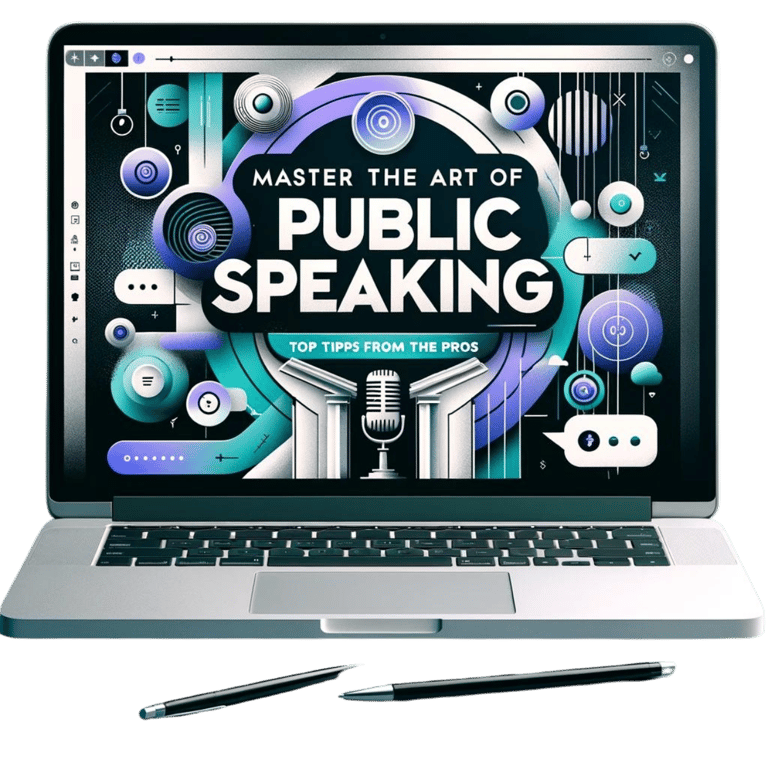Master the Art of Public Speaking: Top Tips from the Pros
Public speaking doesn’t have to be terrifying. This blog post shares top tips from professional speakers on how to overcome stage fright, engage your audience, and deliver powerful presentations with confidence.
PUBLIC SPEAKINGCHALLENGESCONFIDENCE
Iolande Argent
7/24/20243 min read


Public speaking doesn’t have to be terrifying. Even the most seasoned speakers started somewhere, often battling the same stage fright that many of us experience. But with practice, perseverance, and the right techniques, anyone can turn stage fright into stage might. In this blog post, we share top tips from professional speakers on how to overcome stage fright, engage your audience, and deliver powerful presentations with confidence.
1. Embrace Your Nerves
It’s natural to feel nervous before speaking in public. The key is to embrace those nerves and use them to your advantage.
Pro Tip:
Reframe Anxiety: Think of your nerves as excitement. This mental shift can transform your anxiety into positive energy that you can channel into your presentation.
2. Prepare Thoroughly
Preparation is the foundation of a confident presentation. The more familiar you are with your material, the less you’ll need to rely on notes, and the more naturally you can speak.
Pro Tip:
Practice, Practice, Practice: Rehearse your presentation multiple times. Practice in front of a mirror, record yourself, or present to a friend or family member for feedback.
3. Know Your Audience
Understanding your audience is crucial for delivering a presentation that resonates. Tailoring your message to their interests and needs makes your content more relevant and engaging.
Pro Tip:
Audience Research: Gather information about your audience’s demographics, interests, and expectations. Use this information to customize your presentation.
4. Start Strong
The beginning of your presentation sets the tone for the rest of your talk. A strong opening grabs your audience’s attention and makes them want to listen.
Pro Tip:
Powerful Opening: Start with a compelling story, a surprising fact, or a thought-provoking question. This captures attention and sets the stage for your message.
5. Engage Your Audience
Engagement keeps your audience interested and involved. Interactive elements can make your presentation more dynamic and memorable.
Pro Tip:
Ask Questions: Pose questions to your audience throughout your presentation to encourage participation.
Interactive Tools: Use polls, quizzes, or live Q&A sessions to make your presentation more interactive.
6. Use Body Language Effectively
Your body language can significantly impact how your message is received. Confident and open body language conveys assurance and helps build a connection with your audience.
Pro Tip:
Eye Contact: Maintain eye contact with your audience to create a sense of connection.
Gestures: Use natural gestures to emphasize key points and make your presentation more lively.
7. Tell Stories
Stories are a powerful tool for making your message relatable and memorable. They can illustrate points in a way that facts and figures alone cannot.
Pro Tip:
Personal Stories: Share personal experiences that relate to your message. This makes your presentation more authentic and engaging.
8. Manage Your Time
Effective time management ensures that you cover all your points without rushing or dragging. Stick to your allotted time to respect your audience’s schedule.
Pro Tip:
Time Practice: Rehearse your presentation with a timer to ensure you stay within your time limit. Adjust your content as needed to fit the timeframe.
9. Handle Questions with Confidence
Handling questions confidently demonstrates your expertise and openness. Prepare for potential questions and practice answering them concisely.
Pro Tip:
Repeat Questions: Repeat the question back to the audience before answering. This ensures everyone hears the question and gives you a moment to think.
10. Reflect and Improve
After each presentation, take time to reflect on what went well and what could be improved. Continuous improvement is key to becoming a better speaker.
Pro Tip:
Feedback: Seek feedback from your audience or peers to identify areas for improvement. Use this feedback to refine your skills.
Public speaking is a skill that can be mastered with practice and the right techniques. By embracing your nerves, preparing thoroughly, engaging your audience, and continuously improving, you can transform from a nervous speaker into a confident, charismatic presenter.
Until next time, remember: Stage fright is just stage might waiting to be unleashed!
Want more tips on mastering public speaking? Join our free webinar on "Master the Art of Public Speaking: Top Tips from the Pros" and take your skills to the next level!


